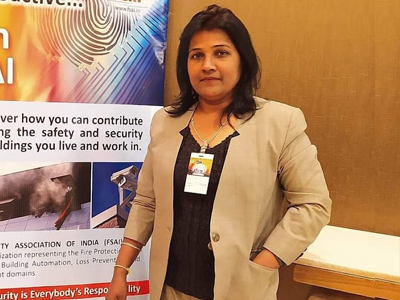Creating Secure and Smart Cities: The Journey towards Innovation and Safety

The development of smart cities represents a remarkable journey that begins with a visionary concept and culminates in a modern, interconnected, and sustainable urban environment. This journey is driven by innovation and urban development, propelled by a commitment to enhancing residents' quality of life through cutting-edge technologies, robust infrastructure, and community engagement.
At its core, a smart city envisions a future where technology seamlessly integrates into the urban fabric. It's a place where resource management, transportation, and public services are optimized, creating a sustainable and efficient ecosystem. However, realizing this vision is no simple task; it requires meticulous planning, collaboration between government and private sectors, and extensive infrastructure development.
As a smart city takes shape, data-driven solutions and IoT devices play pivotal roles in optimizing operations. These technologies enable more efficient resource management, reducing waste and energy consumption. They also improve transportation systems, reducing congestion and pollution, while enhancing public services, leading to a higher quality of life for residents.
Throughout this transformation, community engagement and inclusivity are paramount principles. The benefits of a smart city must be accessible to all residents, ensuring that no one is left behind. By involving the community in decision-making processes and addressing their needs, smart cities become more inclusive, equitable, and responsive to their citizens.
When a smart city project reaches completion, it stands as a shining example of how innovation and urban planning can create a brighter, more connected, and sustainable future for all its inhabitants. It embodies the essence of human ingenuity and urban development, showcasing what can be achieved when technology and visionary planning converge.
Prioritizing Safety in Smart Cities
Safety is a cornerstone of smart cities, and achieving it involves a well-orchestrated approach that integrates various mechanisms. Smart cities prioritize physical security through a systematic series of measures designed to protect residents and vital infrastructure.
The journey towards creating secure smart cities begins with advanced surveillance systems. These systems, equipped with CCTV cameras and sensors, closely monitor public spaces, ensuring constant vigilance and early threat detection. Additionally, smart lighting and environmental sensors contribute to safety by ensuring well-lit and clean streets, making public spaces secure for everyone. Smart traffic management and pedestrian-friendly designs further reduce accident risks, enhancing overall safety.
Classifying Mega City Physical Security
In the context of mega cities, physical security becomes an intricate challenge that requires classification into various categories, each aligned with specific scopes and objectives. Compatibility between these classifications is essential to create a cohesive security approach.
One of the primary categories in mega city physical security is Critical Infrastructure Security, tasked with safeguarding key assets like power plants, transportation hubs, and communication networks. This category must seamlessly align with Public Safety and Emergency Response, ensuring the continuous operation of critical services during crises.
Urban Surveillance and Crowd Control tackle the unique challenges posed by large populations in mega cities. These measures require compatibility with Cyber security Measures to protect data and control systems effectively. Simultaneously, Residential Security focuses on ensuring the safety of citizens in their homes, complementing Commercial and Business District Security, which safeguards economic hubs.
Addressing Challenges in Smart City Physical Security
As smart cities evolve and prioritize physical safety, they encounter several challenges that necessitate strategic responses. One significant concern is the potential vulnerabilities of the technology underpinning these cities. As smart city systems become increasingly interconnected and data-dependent, the risk of cyber attacks and data breaches grows. To counter this, robust cyber security measures must be seamlessly integrated into smart city infrastructure, with regular security audits, updates, and continuous staff training.
Another challenge relates to the potential invasion of individual privacy due to extensive surveillance and data collection. Cities must establish clear regulations and transparent policies to safeguard citizens' privacy while responsibly utilizing data for safety improvements.
Furthermore, standardization and interoperability among various safety components and systems are essential. Many smart city initiatives involve multiple stakeholders and vendors, leading to fragmentation. Corrective measures should include creating standardized protocols and fostering collaboration among stakeholders to ensure seamless integration and communication between different safety systems.
To overcome these challenges, capacity building efforts are crucial. Continuous training and up skilling of personnel are essential to operate and manage complex security infrastructure effectively. Moreover, capacity building should extend to urban planning and design, ensuring that safety measures are incorporated effectively into the city's layout.
The journey to create smart and secure cities is a testament to human innovation, urban development, and technological advancement. By addressing these challenges and implementing effective security measures, smart cities can provide their residents with the safety and quality of life they deserve while becoming beacons of innovation and sustainable urban development.
(This "Interviews" Published in November 2023 Edition)





.png)








.gif)